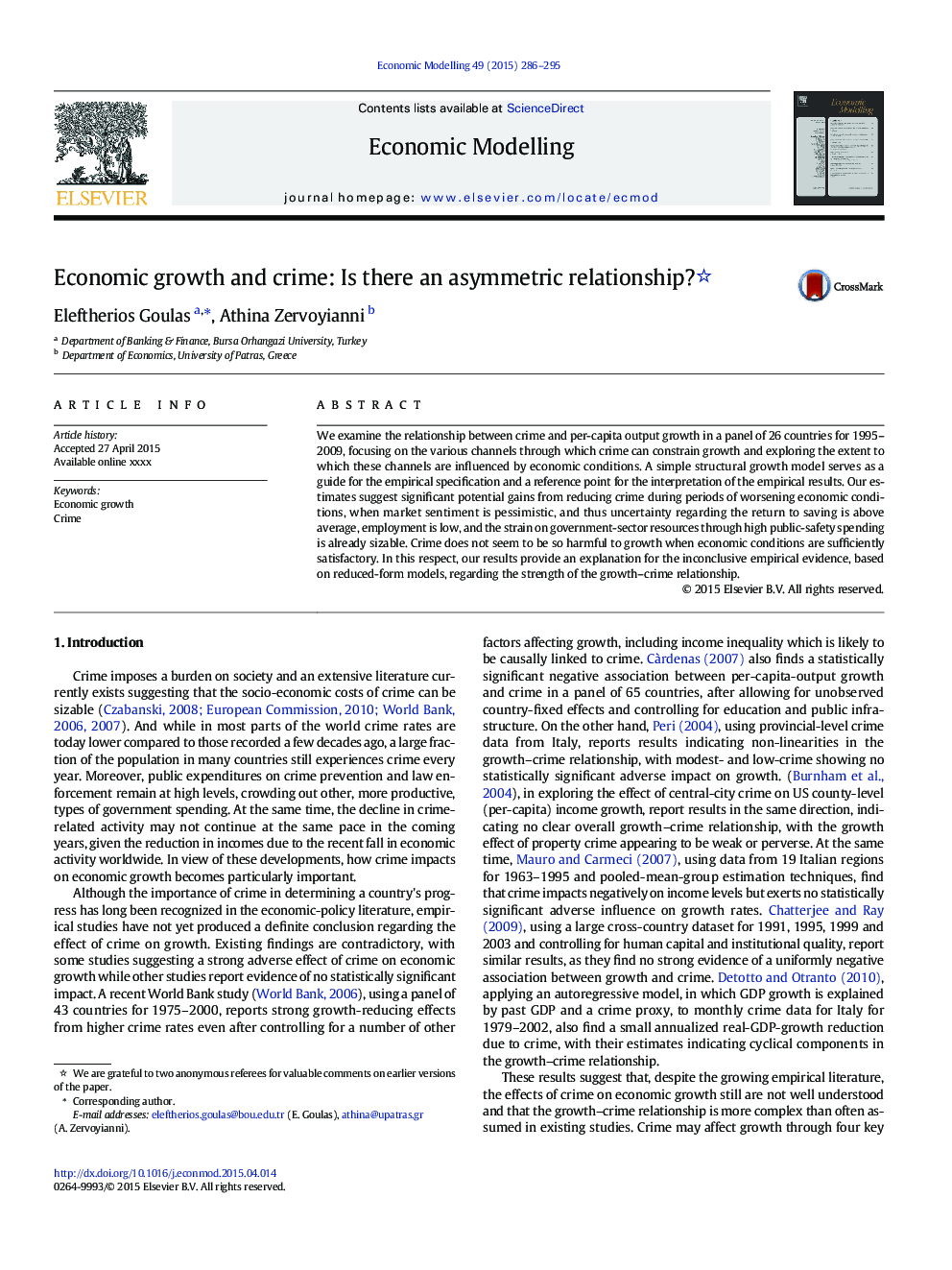| Article ID | Journal | Published Year | Pages | File Type |
|---|---|---|---|---|
| 5053832 | Economic Modelling | 2015 | 10 Pages |
Abstract
We examine the relationship between crime and per-capita output growth in a panel of 26 countries for 1995-2009, focusing on the various channels through which crime can constrain growth and exploring the extent to which these channels are influenced by economic conditions. A simple structural growth model serves as a guide for the empirical specification and a reference point for the interpretation of the empirical results. Our estimates suggest significant potential gains from reducing crime during periods of worsening economic conditions, when market sentiment is pessimistic, and thus uncertainty regarding the return to saving is above average, employment is low, and the strain on government-sector resources through high public-safety spending is already sizable. Crime does not seem to be so harmful to growth when economic conditions are sufficiently satisfactory. In this respect, our results provide an explanation for the inconclusive empirical evidence, based on reduced-form models, regarding the strength of the growth-crime relationship.
Keywords
Related Topics
Social Sciences and Humanities
Economics, Econometrics and Finance
Economics and Econometrics
Authors
Eleftherios Goulas, Athina Zervoyianni,
